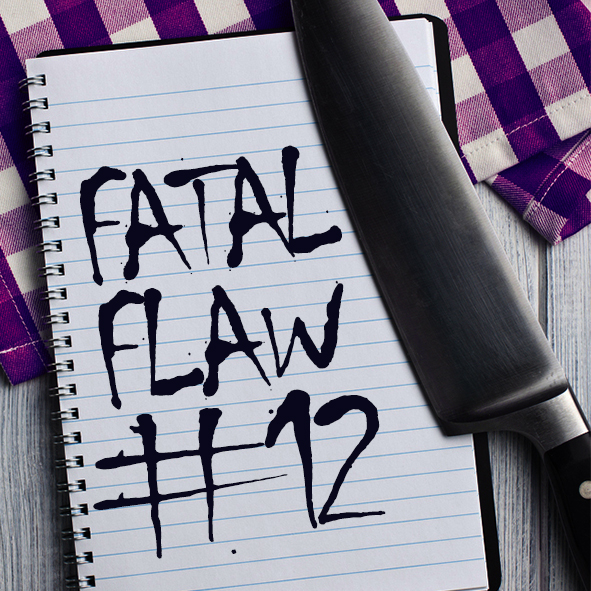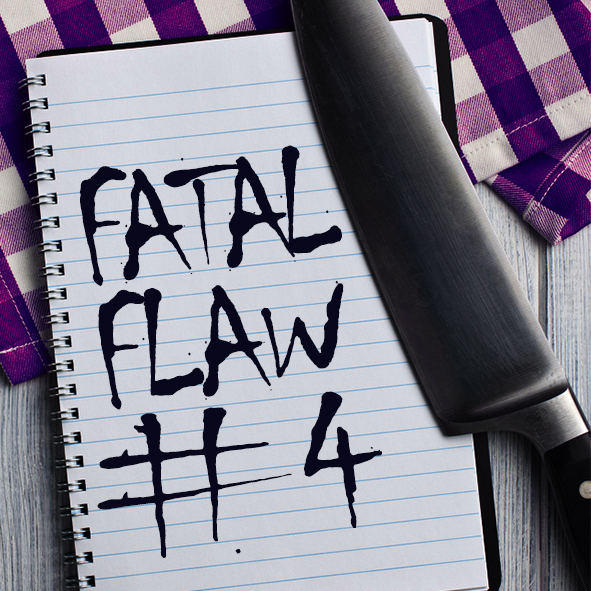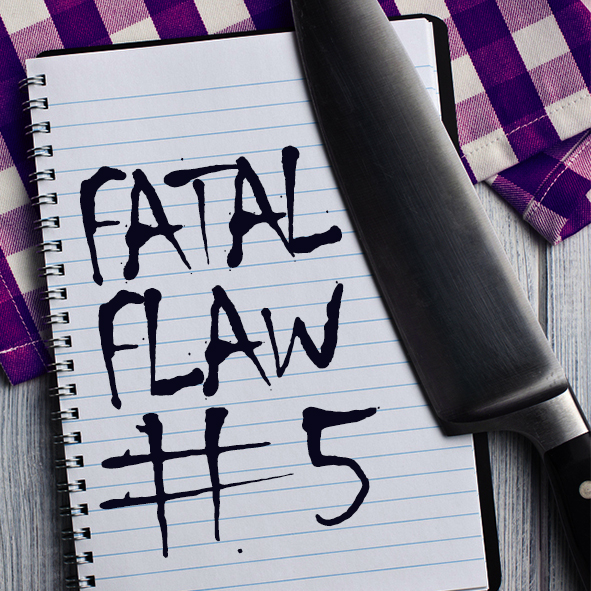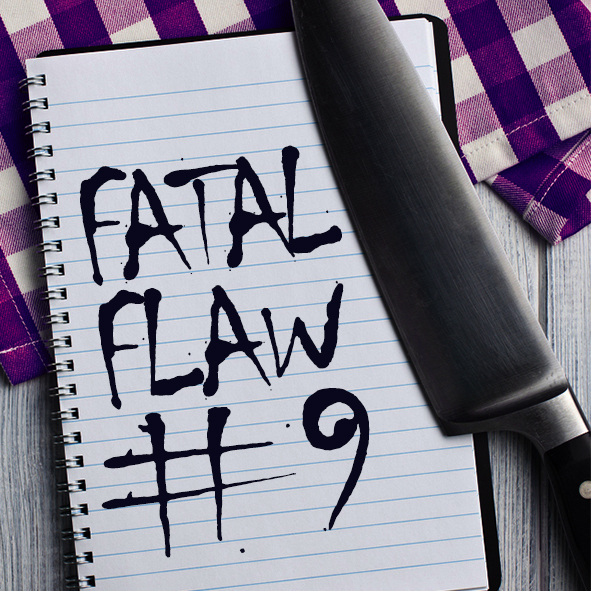Searching for the Poetry in Story
Today Robin Patchen takes a look at cadence and rhythm as we begin to wrap up attack on Fatal Flaw #12: Flawed Writing Mechanics. Don’t miss the other posts that tackle this important topic (start with this one).
If your readers wanted poetry, they’d pick up a Robert Frost anthology. Or perhaps Emily Dickinson or Shakespeare, right?
I don’t think so.
Yet, readers are looking for poetry, even if they don’t know it.
Well, maybe not poetry, but cadence. Readers want to hear words put together in beautiful ways. They want sentences to roll like waves or batter like bullets. They want to see alluring alliterations and evocative metaphors.
Readers long for beauty in words the way tourists seek out beauty in landscape and architecture. Perhaps they fly to Paris for the wine and cheese, but they’ll admire the Notre Dame on the way to dinner, and the trip will be richer for it.
How do you make your stories as satisfying as a great French meal and as grand as the Notre Dame? One way is to consider cadence when you write.
Cadence Is Not Just Pretty Writing
Cadence is rhythm. It’s that thing that makes you need to finish a limerick or lyric. If I were to sing “The wheels on the bus” Everybody in the room would say or at least think, “. . . go round and round.” You can’t help yourself because cadence longs to be finished. Poetry has a rhythm, and rhythm longs for completion.
Beautiful writing is about more than cadence though. It’s also about choosing lovely words, choosing the right words—those that reflect the scene and mood. It’s about letting people see beyond the words to the setting and characters and emotions beneath. It’s hard to describe, so let’s look at an example.
Before:
It was raining outside. I felt safe inside, in my living room, where it was dry. I was wearing a pair of pink pajama pants, sweatshirt, and a pair of thick socks. I made myself a cup of hot chocolate. I cuddled up in front of the fireplace with my cat, who was named Mrs. Boots. The cat snuggled her head into my elbow. Everything was good in the world, and I felt content. But then I heard a noise outside, where there was some kind of a bump, and I got scared.
Technically, there’s nothing wrong with the above paragraph. The words and punctuation are being used correctly. But does that paragraph have any rhythm? Any cadence? Does it evoke any emotions?
Before we look at the After paragraph, let’s analyze this one a little. The first sentence is boring and tells us very little. Is it a gentle rain or a hard rain? A warm rain or a cold rain? Is it daytime or night? Or is it daytime but dark because of the rain? Is there thunder and lightning? How long has it been raining? How long is it going to rain? So that first sentence, while technically correct, tells us next to nothing.
The second sentence—“I felt safe inside, in my living room, where it was dry.”—irritates me on multiple levels. First, it tells us this person felt safe. But in fiction we’re supposed to show, not tell. Also it uses the word inside and in back-to-back. And really, isn’t it safe to assume it’s dry inside? That last phrase is redundant and unnecessary.
Think about the third sentence: “I was wearing a pair of pink pajama pants, sweatshirt, and a pair of thick socks.” You always want to write with parallel structure. In that sentence, you can’t have “a pair of” a sweatshirt, though. We could fix it like this: “I wore pajama pants, a sweatshirt, and thick socks.” That’s better, because the cadence flows. Read it aloud and hear what I mean.
Another option: “I wore my favorite pink pajama pants and my blue Red Sox sweatshirt.” I like the extra detail of the “Red Sox,” and I think it gives us a little clue about the character. Do we need the socks? If so, then we’d need to work that information in another way.
The next sentence is blah but not worth parsing. These two are next: “I cuddled up in front of the fireplace with my cat, who was named Mrs. Boots. The cat snuggled her head into my elbow.” The word cat is used twice back-to-back. Is the “who was named” necessary? What about: “I cuddled in front of the fireplace. Mrs. Boots jumped onto the sofa with me and nudged her furry body in the crook of my elbow. She looked at me with her big gold eyes and purred until I scratched her behind the ears.” Better, I think, and I didn’t use the word “cat” once.
The next sentence isn’t worth mentioning. The final thought: “But then I heard a noise outside, where there was some kind of a bump, and I got scared.” Aside from the obvious telling—“I got scared”—this sentence is clunky and inelegant. The reader won’t get nervous because of that noise, though he might cringe at the bad writing.
So the sentences taken alone aren’t good, and when you read them together, they make the whole thing worse. There is no cadence or rhythm to that paragraph, no poetry, no imagery. Just flat words on a page. Let’s look at the After passage.
After:
The rain streamed down the window and plopped in puddles on the back porch. I squinted in the darkness and could barely make out the trees bent and whipping in the wind. I snuggled in my favorite Red Sox sweatshirt, grabbed a steaming cup of hot chocolate, and headed for the living room. The fire I’d lit earlier was already warming the downstairs, drawing the dampness away. I’d turned off the TV when the satellite went out, which was right after the weatherman promised the storm would pass by morning.
I set my mug on the coffee table, lifted my novel, and settled into the corner of the sofa. Mrs. Boots, never one to miss an opportunity, climbed onto my lap. She implored me with those big brown eyes, her purrs louder than the thunder rumbling in the distance. “Okay, settle down.” I scratched her behind the ears, and she laid her head on top of her furry paws with a look of pure contentment.
With one hand petting the cat, I lifted my book again. I had just finished a chapter when something startled me. I paused and listened. Surely nobody would venture this far from town on such a dark and treacherous night, but after a moment, I heard the sound again. A bump, then a scraping. And the noises were coming from the back porch.
I hope you agree that’s better. I attempted to lull the reader into a sense of comfort and security, because that is how the main character feels. But I also wanted to hint at the impending danger with the thunder rumbling in the distance. Frankly, that’s a subtle hint, and it’s not important to me that the reader pick up on that. If the reader feels content and then surprised by the bump, then the reader feels what the heroine is feeling, and that’s the objective.
Mastering the Art of Poetry
Think about each word. Is your character feeling content? Then the rain might pitter-patter on the deck. Is the mood darker? Then the rain could pound against roof. Same situation, but the word pound conveys a very different feel than the whimsical pitter-patter. Many words convey some sort of emotion, not just in their meaning but in their sounds. For instance, is it any wonder that the word beautiful is much more commonly used than its synonym pulchritudinous. There is nothing beautiful about that word. And while comely may mean pretty, it’s too close to its antonym homely to be used very often. So the words you choose and their sounds matter.
One great way to discover if there’s rhythm in your prose is to read it aloud. Hear the words you’ve chosen and listen to their sounds. Hear the rhythm, the cadence. Ask yourself if it sounds right, and keep working on it until it does.
Finding the poetry in the story leads not only to better writing but to fuller immersion. It’s worth the extra time, and like so many of our fatal flaws, it may be difficult at first to get a handle on it, but as you work on it, your prose will naturally become more poetic.
Your turn:
Do you struggle with finding just the right words or phrases to add some cadence to your writing? Do you find reading your pages out loud helps you hear the cadence (or lack thereof)? Which authors do you admire for their beautiful rhythms?
Only 2 more days left!
|
||
|












This reminds me of a something Hemingway’s wife Mary wrote:
“Nobody really knows or understands and nobody has ever said the secret. The secret is that it is poetry written into prose and it is the hardest of all things to do…”
from Mary Hemingway, How It Was